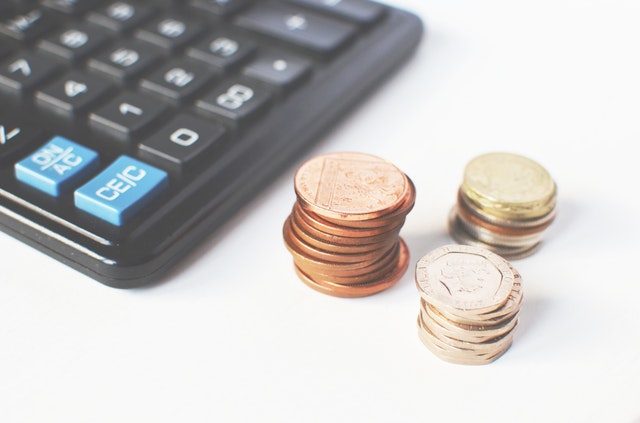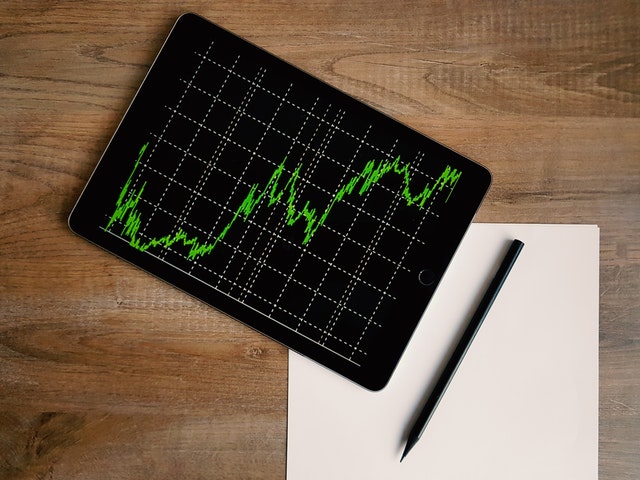What Is Drawdown in Forex Trading? (2025 Guide)
All products and services featured are independently selected by WikiJob. When you register or purchase through links on this page, we may earn a commission.
61% of retail investor accounts lose money when trading CFDs with eToro. You should consider whether you understand how CFDs work, and whether you can afford to take the high risk of losing your money.
Forex trading is all about converting currencies from one to another to make a profit. Similar to stocks and shares, forex trading is about understanding market forces to tell you when it’s a good time to invest your money.
Investing in forex will inevitably come with profits as well as losses. This article will explore drawdown: the difference between the winning and losing trades in your account.

What Is Drawdown?
Simply put, drawdown is about understanding how much money you may have lost as a result of forex trades.
It takes the high point (either the amount of money that you start with or the amount of money that you’ve earnt in profit) and the low point of your account balance (perhaps you’ve lost money in a trade) and expresses the difference between them as a percentage.
The calculation is the difference between a relative high in your capital minus a relative low.
For example:
You may start at £10,000 in your account.
After a bad trade, the balance in your account may drop to £9,000.
This indicates a 10% drawdown – even if your capital balance rises again.
Why Is Drawdown Monitored by Forex Traders?
Forex trading is all about risk management. It’s about using your understanding of volatile markets to understand the best trading times and knowing how to minimise your losses.
This is where drawdown comes into play.
As we’ve just explained, the drawdown represents the amount of money you have lost as a percentage. Therefore, if you’re new to forex trading, you want this figure to be as low as possible.
Understanding drawdown ensures that you remain profitable for as long as possible.
Like the stock market, when it comes to forex trading there will always be a time when you hit a losing streak – no trading system can be profitable all the time. Knowing how to manage this losing streak will determine your overall profitability.
Your drawdown percentage helps you understand how much capital you have and how much longevity your system has. If you continue to experience drawdown as a result of a series of bad trades, your capital will quickly be reduced and you’ll be forced to cease trading.
For example:
If you hit a losing streak, you may be able to cope with several 5% to 10% drawdown losses in a row before you move into an upward swing.
But, if you suffer from a 50% drawdown and experience a significant loss, you will have to achieve a 100% return to simply break even.
As you can see, that’s a much harder challenge and extremely difficult to achieve.
Forex traders monitor their drawdown because it allows them to change their systems and strategies to ensure that they can continue trading.
Some traders may aim for an 80% win-ratio – and whilst this sounds promising, there is no guarantee that winning 80 out of 100 trades will see you remain profitable.
After all, that would indicate that you only lost 20 trades out of a hundred – but if you’re on a downwards slide and the 20 losses are consecutive, can you be sure you’ll still be in a position to continue trading?
This is why skilled forex traders will use their understanding of drawdown to minimise their risks. They’ll focus on the smaller trades so that, if they do hit a losing streak, they can survive the losses and continue trading.
61% of retail investor accounts lose money when trading CFDs with eToro. You should consider whether you understand how CFDs work, and whether you can afford to take the high risk of losing your money.

How to Handle Drawdowns in 2025
Here are a few strategies for handling forex drawdown and minimising your risks:
Step 1. Don’t Expect to Win Every Trade
You’ll never be able to win every single trade; it’s simply not possible.
Instead, you need to decide how much loss you’re prepared to accept before you move on. Measure your success over a series of trades and not on each win or loss.
Step 2. Use Your Stop Loss to Reduce Your Risks
If you’re using a dedicated forex signal provider, you’ll be able to use your automatic closing points (ACP) and set up your stop loss (SL) features.
This is where your trade will automatically cease based on your pre-determined criteria.
Perhaps you’re only willing to accept a 5% drawdown; in which case, if the trade does start to fall negatively, your remaining capital balance will be protected.
Step 3. Consider Implementing a Drawdown Cap
Beyond the stop loss features, you should also consider implementing a drawdown cap. This is where you choose how much you’re willing to lose per week or month before you walk away.
Perhaps you’re only investing 1% of your capital balance each trade; if you decide that you’ll only accept a drawdown of 5% then you know that as soon as you reach that limit, it’s time to stop.
This is a great way to monitor your risk and remain calm and controlled. You may decide that’s enough for the week, or that’s enough for that month – it’s about creating your own rules and adhering to them.
Step 4. Keep Your Risk Low
It may feel tempting to blow your capital balance on a big trade; particularly if you’ve recently been hit by a series of bad trades and your capital balance is significantly reduced.
But the most effective forex traders keep their trades small. Rather than focusing on set financial figures, they use a percentage of their capital balance. Not only does this reduce their risk of experiencing big losses, but it helps them to remain far more profitable over the long term.
For instance:
If you start at £10,000, you may think that it’s ok to trade 10% (or £1,000) – after all, the bigger the trade, the bigger the profit.
But, if you lose it, you’re immediately down to a £9,000 capital balance.
If your strategy is to trade 10% each time, what would happen if you experienced 8 to 10 losses in a row? You would very quickly be out of forex trading because your capital simply wouldn’t have enough balance to continue.
This is why many forex traders prefer to trade only 1% of their capital balance. Depending on how large their balance is, this could be a small financial sum or a large figure. But it means that they can retain control and have confidence that they aren’t losing large amounts of their capital balance.
If you are in a drawdown slump, some forex traders recommend reducing your risk even further.
If you reduce your risk for each subsequent trade, you will have a much softer journey. Once your slump starts to end and you’ve won three or four trades back-to-back, you can start to rebuild your confidence and increase your risk in a bid to recoup your capital balance.
Step 5. Keep Calm and Carry On
When it comes to forex trading and forex drawdown, you should prevent emotions from getting the better of you.
It may feel easy to try and recoup your losses by ‘revenge trading’ or ‘overtrading’ but it’s undoubtedly the most dangerous option. This is where you start to increase your risk in a bid to win back the balance that you’ve lost.
This is the worst thing that you can do. The odds may not stack in your favour, and all that is likely to happen is that you will crash and burn fast.
If you are in a slump, you should try changing your perspective. It’s never nice to lose money but it shouldn’t be the be-all and end-all.
Consider thinking about whether the loss will impact you day-to-day. If it will then you’ve over-traded. If it doesn’t then you can simply take a break, walk away and come back refreshed in a week or two.
Step 6. Remember Your Long-Term Strategy
When it comes to forex trading and forex drawdown, you always need to think of the long-term strategy behind what you are trying to achieve.
Are you trying to build up your capital balance little by little or is there something specific that you’re aiming for?
Knowing what you want to do will keep you on track and allow you to make informed decisions, which will not just reduce your risk but could actively improve your chances of success.
61% of retail investor accounts lose money when trading CFDs with eToro. You should consider whether you understand how CFDs work, and whether you can afford to take the high risk of losing your money.
Frequently Asked Questions
Drawdown in forex refers to the peak-to-trough decline in the account equity of a trader during a specific period. It is the percentage difference between the peak capital in the account and the lowest account balance during that period.
Acceptable drawdown in forex trading varies for each individual trader and depends on their trading strategy and risk tolerance.
Generally, a drawdown of up to 20% is considered acceptable, while anything beyond that may indicate higher risk and could result in significant losses.
To reduce drawdown in forex, traders can use risk management techniques such as setting stop-loss orders, diversifying their portfolio and reducing leverage.
They can also analyze their trading history and identify patterns or behaviors that result in drawdowns.
Drawdown in forex can be calculated by subtracting the lowest point in the account equity from the highest point, and dividing the difference by the highest point, then multiplying by 100 to get a percentage.
Yes, drawdowns are a common part of trading forex, and traders need to be prepared to manage them.
It is essential to have a trading plan and stick to it, along with proper risk management techniques to mitigate potential drawdowns.
The two main types of drawdown in forex trading are equity drawdown and maximum drawdown.
Equity drawdown measures the percentage of loss in the account equity, while maximum drawdown calculates the largest percentage loss in the account from a high point to a low point.
Drawdown can be managed by implementing risk management strategies like using stop-loss orders, reducing position sizes, diversifying your portfolio and avoiding over-leveraging.
It is also essential to have a trading plan and sticking to it, and not letting emotions control your trades.
Drawdown cannot be entirely avoided in forex trading. However, it can be managed and minimized through proper risk management strategies and disciplined trading practices.
Common causes of drawdown in forex trading include over-trading, poor risk management, lack of trading discipline, emotional trading and trading without a solid strategy.
To recover from drawdown, traders should focus on implementing a solid risk management strategy, avoiding over-leveraging and sticking to their trading plan.
Additionally, traders can focus on improving their trading skills and education to avoid future drawdowns.
The duration of a drawdown in forex trading can vary and depends on several factors, such as the trader's risk management strategies, trading plan and market conditions.
Drawdowns can be short-term or long-term, and it is crucial to be patient and disciplined when experiencing a drawdown.
To prevent drawdown in forex trading, traders should focus on proper risk management strategies, avoid over-leveraging, stick to their trading plan, and continuously educate themselves on market conditions and trading strategies.
Diversifying your portfolio and avoiding emotional trading can also help prevent drawdown.
Final Thoughts
We hope that this article has given you a small insight into the intricacies of forex drawdown. There’s a lot to think about but, if handled correctly, these insights should help to minimise your risk and help you make the most of your forex trading strategies.
WikiJob are not financial experts. We would always recommend that you always do your due diligence and equip yourself with as much knowledge as possible before getting involved in any form of forex trading.
WikiJob does not provide tax, investment or financial services and advice. The information is being presented without consideration of the investment objectives, risk tolerance or financial circumstances of any specific investor and might not be suitable for all investors. Past performance is not indicative of future results. Investing involves risk including the possible loss of principal.
61% of retail investor accounts lose money when trading CFDs with eToro. You should consider whether you understand how CFDs work, and whether you can afford to take the high risk of losing your money.







